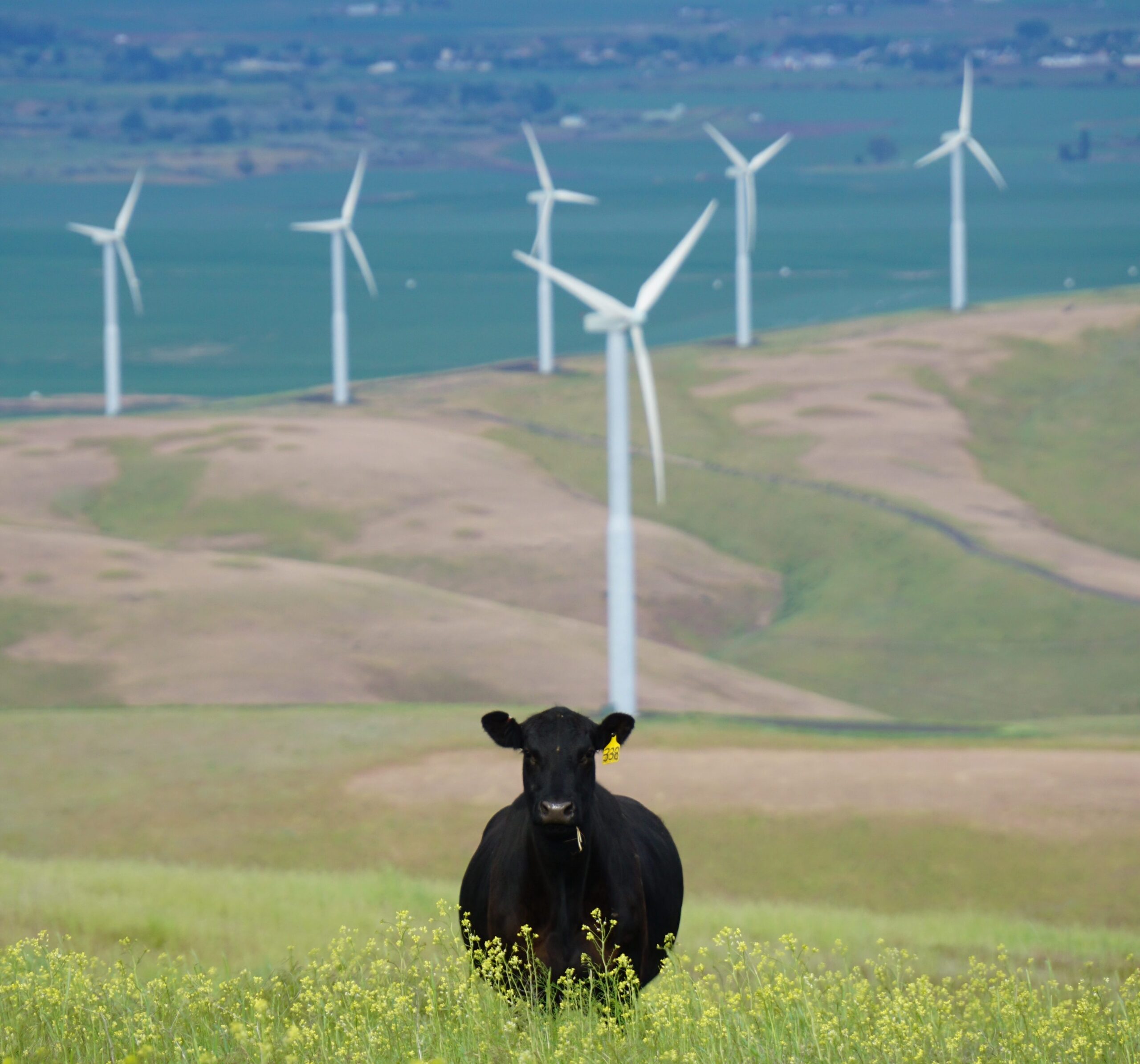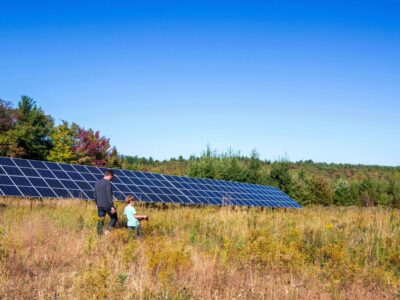The Hoosier state, in the top ten coal-producing states in America, is now tapping a new power — one that’s sweeping the flat Indiana terrain at a high rate of speed, harnessed by more than 1,000 wind turbines on 16 large wind farms. Indiana wind produces 2,317 megawatts annually, that’s 6% of the state’s electricity generation and enough to power more than 1 million homes. Currently 12th among states for wind power according to the American Wind Energy Association, a decade ago there were only a few small windmills in Indiana and they did little more than pump water on farms. Fast forward to 2020 and the wind industry is booming, as costs fall and demand rises for renewable energy among big industry customers and utilities. Over the last few years, clean energy jobs have steadily risen, four times faster than statewide jobs overall. In Indiana before the pandemic the advanced energy sector employed more than 90,000 people. That’s more clean energy jobs than auto manufacturing and nearly twice as many as schools and colleges. But while wind is cheaper than many other energy forms, the industry is not immune to the coronavirus. This spring Indiana lost 15,000 clean energy jobs and it is unclear how the pandemic economy will continue to affect the sector.
State Senator John Ruckelshaus, R-Indianapolis, has a plan. In his recent op-ed in the Indianapolis Star Ruckelshaus wrote: “Job creation is a bipartisan concern,” and so too is clean energy, he told us on a recent phone call. Ruckelshaus explained how as power plants near the expiration of their life-cycles, utilities are confronted with a challenge: whether to continue with coal-fired plants, or to explore cleaner and more resilient long-term energy options. “There’s so much more upside in having a mixed portfolio,” said Ruckelshaus. “It’s a lot cheaper too, so the economics are there for the utilities.” Ruckelshaus details what he considers the best solution: “Let’s have a potentially smaller or more nimble power plant that’s run by natural gas or something like that and then have this deep portfolio of wind and solar and clearly, where applicable, hydro.”
The utilities are indeed asking the same question, and some of them have arrived at the same answer. In 2018, Northern Indiana Public Service Co. released a plan that outlined its vision to housing a cleaner and more diverse energy mix and would save consumers $4 billion in the process. And back to those jobs, a recent report shows that the demand for Indiana renewable energy from companies intent on reaching sustainability goals would bring nearly $6 billion in investment to the state and 25,000 jobs. It’s all a matter of harnessing an abundant and inexhaustible force. Over half of Indiana is farmland, with 5 million acres of forest. Clean energy is an overall sustainable approach to protecting Indiana’s natural resources, and wind energy development offers farmers long-term investments in their land including royalty payments more predictable than the harvest each year.
It just makes sense. For everyone. Ruckelshaus believes lawmakers from both parties can get behind clean energy as it has business and environmental appeal. “You gotta go to everyone’s natural constituency and find where there’s a merger. You find that there’s opportunity for both of them to collaboratively work together, and voila.” Advancing clean energy sources, like wind, in Indiana has the potential to help lower utility costs for consumers. According to the investment firm Lazurus, the cost of wind energy has fallen 69% since 2009. As of late last year, the cost of wind-generated electricity was in the range of $29 to $56 per megawatt-hour, compared with $36 to $60 for coal. For 2020, the U.S. Energy Information Administration projected that wind generation across the nation could increase as much as 14% — the biggest increase since 2012. But some in Indiana say there’s not enough clear policy to support that growth.
When asked about a renewable energy standard, Ruckelshaus notes that when the word mandate is thrown out many get nervous. “The language in our bill for the renewable energy standard had some tax incentives for the utilities to go down that road, but very small and very minor, so wasn’t enough to really move the needle, but enough to get their attention.” Ruckelshaus is referring to the Comprehensive Hoosier Option to Incentivize Cleaner Energy program. Passed in May of 2011, before Ruckelshaus assumed office, the program set a voluntary goal of 10% clean energy by 2025, based on the amount of electricity supplied by the utility in 2010.
So will Indiana achieve that 14% increase and ride the wave of the wind? Again, it comes down to consensus, but Ruckelshaus is ready. “I think it is time for Indiana to dust off that renewable energy standard with everybody at the table. With utility companies making these big investment decisions, asking should we build a mega coal plant with all those environmental issues or should we have a more diversified portfolio, I think they’re more willing to come to the table and help pursue this. Could be a win-win.”





